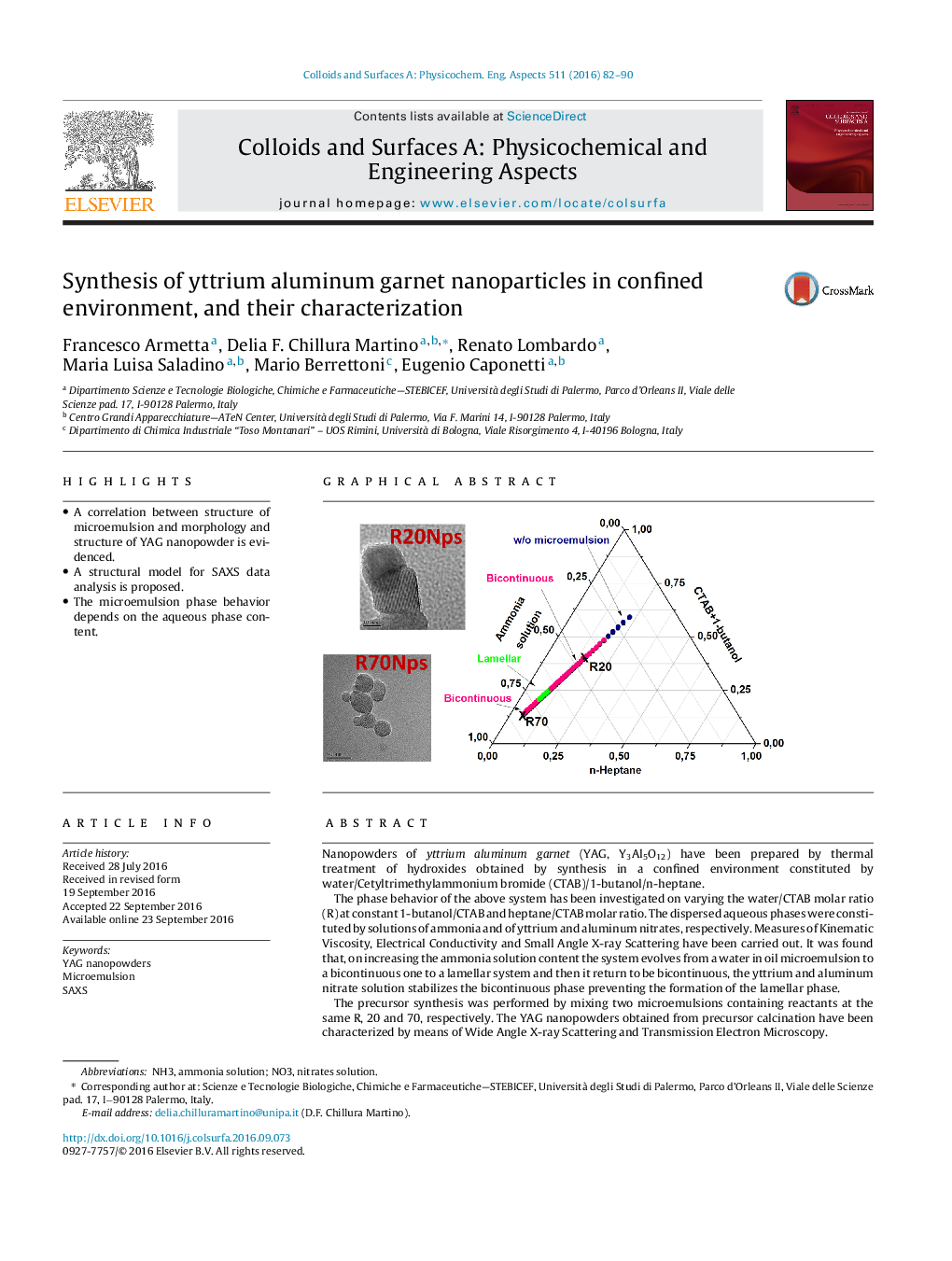| Article ID | Journal | Published Year | Pages | File Type |
|---|---|---|---|---|
| 4982470 | Colloids and Surfaces A: Physicochemical and Engineering Aspects | 2016 | 9 Pages |
â¢A correlation between structure of microemulsion and morphology and structure of YAG nanopowder is evidenced.â¢A structural model for SAXS data analysis is proposed.â¢The microemulsion phase behavior depends on the aqueous phase content.
Nanopowders of yttrium aluminum garnet (YAG, Y3Al5O12) have been prepared by thermal treatment of hydroxides obtained by synthesis in a confined environment constituted by water/Cetyltrimethylammonium bromide (CTAB)/1-butanol/n-heptane.The phase behavior of the above system has been investigated on varying the water/CTAB molar ratio (R) at constant 1-butanol/CTAB and heptane/CTAB molar ratio. The dispersed aqueous phases were constituted by solutions of ammonia and of yttrium and aluminum nitrates, respectively. Measures of Kinematic Viscosity, Electrical Conductivity and Small Angle X-ray Scattering have been carried out. It was found that, on increasing the ammonia solution content the system evolves from a water in oil microemulsion to a bicontinuous one to a lamellar system and then it return to be bicontinuous, the yttrium and aluminum nitrate solution stabilizes the bicontinuous phase preventing the formation of the lamellar phase.The precursor synthesis was performed by mixing two microemulsions containing reactants at the same R, 20 and 70, respectively. The YAG nanopowders obtained from precursor calcination have been characterized by means of Wide Angle X-ray Scattering and Transmission Electron Microscopy.The obtained nanopowders were constituted by nanoparticles showing strong differences in terms of size and aggregation that depend on the microemulsion structure.
Graphical abstractDownload high-res image (209KB)Download full-size image
